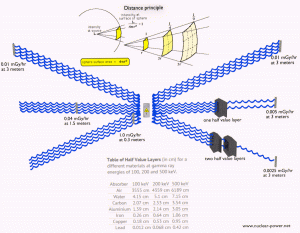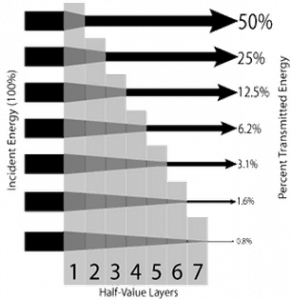According to the ICRP (Publication 103), the System of Radiological Protection is based on the following three principles:
- Justification. “Any decision that alters the radiation exposure situation should do more good than harm.”
- Optimization of Protection. “Doses should all be kept as low as reasonably achievable, taking into account economic and societal factors.” (known as ALARA or ALARP)
- Dose Limitation. “The total dose to any individual … should not exceed the appropriate limits.”
One of these principles is the optimization of protection, which requires that:
“doses should all be kept as low as reasonably achievable.”

This statement is known as the ALARA principle. ALARA is an acronym for “as low as is reasonably achievable.” The ALARA principle means that we should make all reasonable efforts to maintain exposures to radiation as far below the dose limits in this part as is practically consistent with the purpose for which the licensed activity is undertaken while at the same time not wasting a lot of money, time and effort to do so. The ALARA principle arises from the fact that infinite time, effort, and money could be spent in the attempt to reduce a risk to zero.
ALARA and Radiation Shielding
If the radiation source is too intensive and time or distance does not provide sufficient radiation protection, the shielding must be used. Radiation shielding usually consists of barriers of lead, concrete, or water. There are many, many materials, which can be used for radiation shielding, but there are also many situations in radiation protection. It highly depends on the type of radiation to be shielded, its energy, and many other parameters.
 Generally, shielding of gamma rays is based on attenuation theory, which uses the concept of half-value layers. The half-value layer expresses the thickness of absorbing material needed to reduce the incident radiation intensity by a factor of two. As a result, according to attenuation theory, it is impossible to shield radiation completely because attenuation is exponential. Some radiation, however small, almost every time, travels through the shield.
Generally, shielding of gamma rays is based on attenuation theory, which uses the concept of half-value layers. The half-value layer expresses the thickness of absorbing material needed to reduce the incident radiation intensity by a factor of two. As a result, according to attenuation theory, it is impossible to shield radiation completely because attenuation is exponential. Some radiation, however small, almost every time, travels through the shield.
Recall that today, the protection system is based on the LNT hypothesis, assuming that all radiation is bad and that the harmful effect (essentially the cancer risk) increases linearly with a dose with no threshold (start at zero doses). But we cannot shield radiation completely because it would require radiation shields of infinite thickness. So what is the optimal thickness of the radiation shield? Since zero doses are not attainable, we can only minimize the effects of radiation As Low As is Reasonable Achievable (the ALARA – principle). The ALARA principle is also reflected in dose limits. These limits are generally set to limit stochastic effects to an acceptable level and prevent deterministic effects completely.
ALARA and ALARP
The term ALARP arises from UK legislation, particularly Health and Safety at Work. Act 1974 requires “Provision and maintenance of plant and systems of work that are, so far as is reasonably practicable, safe and without risks to health.” The phrase So Far As is Reasonably Practicable (SFARP) in this and similar clauses are interpreted as leading to a requirement that risks must be reduced to a level that is As Low As is Reasonably Practicable (ALARP). ALARP, used especially in the UK, is a much broader term than ALARA since it is applicable in various fields of the regulation and management of safety-critical and safety-involved systems.
The term “as low as reasonably achievable” (ALARA) used in the optimization principle is synonymous with ALARP. The term is used to describe the risk reduction process outside the UK. The term ALARA, or “as low as reasonably achievable,” is used interchangeably in the United States of America, almost exclusively in the field of radiation protection. ALARA and ALARP are considered to be equivalent in meaning and purpose.